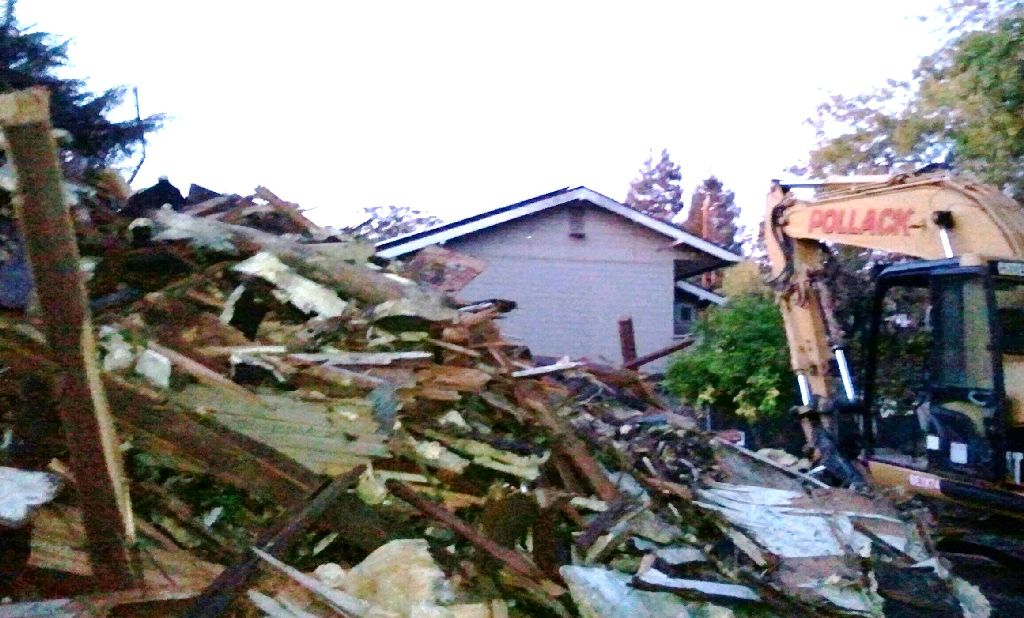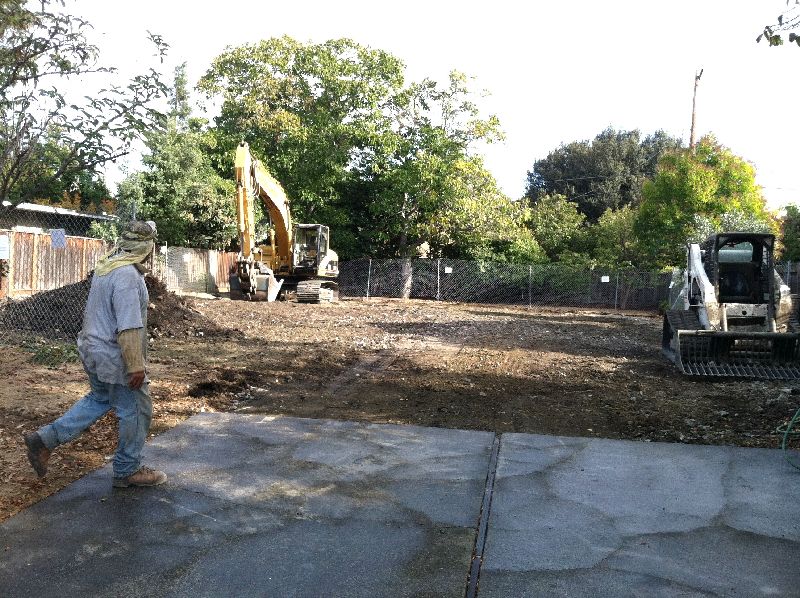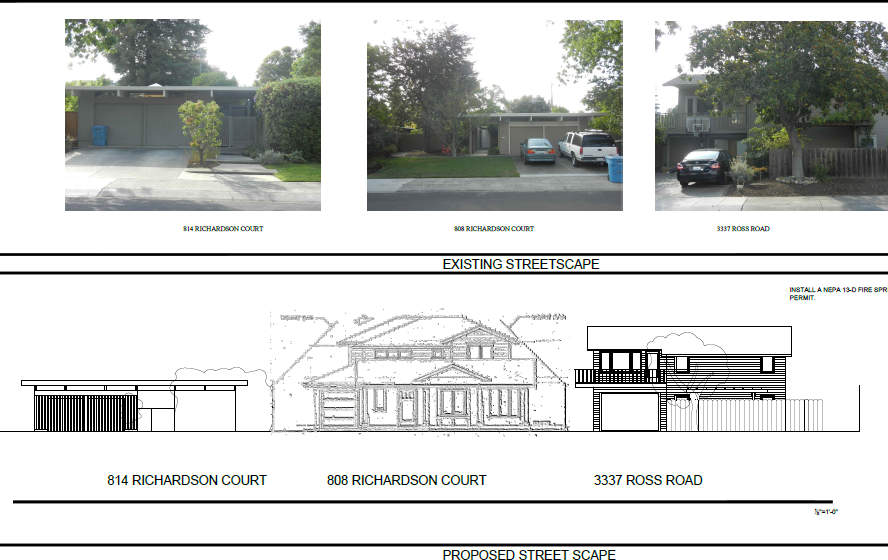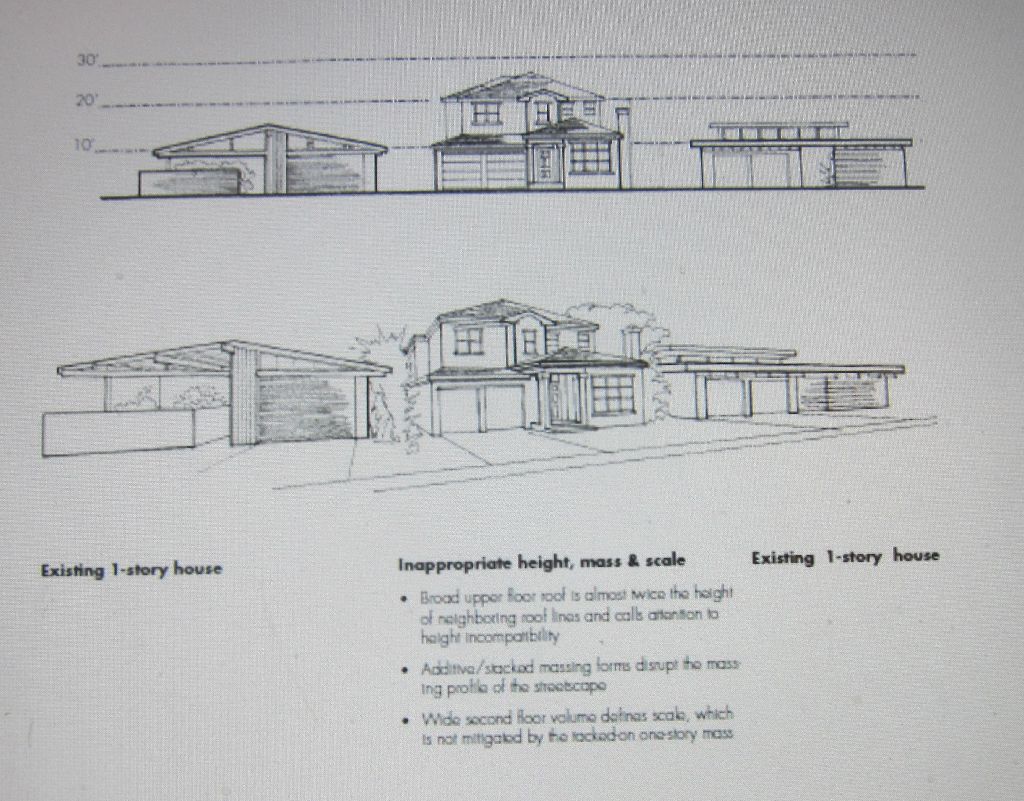
Strategies Sought to Preserve Eichlers
 |
|
|
A Palo Alto Eichler was just torn down to be replaced by what some neighbors call a “monster.” But efforts to protect the rest of Richardson Court could provide ideas for other Eichler neighborhoods.
“Now the home next to mine will be 25 feet high and we are ten feet high,” says Frank Ingle, who lives next door to the teardown, at 808 Richardson Court in the approximately 34-home neighborhood. The house came down on October 21.
Ingle was the leader of a group of neighbors who tried to head off the demolition. He says they have learned a lesson from their failure – that the city’s ‘Single-Family Individual Review Guidelines’ “are strictly guidelines,” he says. “They have no force of law.”
The guidelines, adopted in 2005, are designed to “preserve the unique character of Palo Alto neighborhoods, recognizing that the visual unity of a street and shared architectural and site features of nearby property will result in varied design responses per each particular neighborhood context,” in the words of the guidelines.
“I went into it too naively,” Ingle says of his struggle to prevent the demolition.
 |
|
|
He said Eichler and non-Eichler neighborhoods throughout town face a similar threat, thanks to sky high property values and the desire of developers and some homeowners and homebuyers to maximize square footage and profits.
“I just learned that the house across from the new house is to be sold,” he says. “We can fully expect that these monster homes will take over our block. They will just be marching down the block.”
But not so fast. A handful of residents on Richardson have explored ways of preserving their neighborhood’s character. There is even some optimism.
“We’re not giving up. We don’t want this to keep happening,” says Sheila Himmel, who has lived in the neighborhood since 1983.
Two efforts are underway. One, which Himmel is spearheading, is to strengthen city oversight. This could involve “added zoning [rules],” she says, “or having the city become aware these houses are falling through the cracks of their guidelines.”
She is encouraged that a meeting is being set up between residents of Richardson Court and Hillary Gitelman, the relatively new planning director, who started in late 2013. Himmel has spoken to people in another neighborhood who had met with Gitelman and “felt it was a fruitful way to go, that the city was responsive.”
 |
|
|
“I’m looking forward to my upcoming meeting,” Gitelman says.
The neighborhood is pursuing another tack as well – reinstituting the neighborhood’s long-moribund CC&Rs (covenants, conditions and restrictions) that would allow neighbors to halt remodels or teardowns that do not meet CC&R rules.
“Enforcement,” Ingle notes, “requires civil action by the committee or by any property owner of the tract.”
To that end, Ingle and Himmel say, they are canvassing the neighborhood, hoping that 51 percent of residents would agree to reinstituting the CCRs and forming an association to oversee them.
Ingle thinks that’s the way to go because it’s do-able and democratic. “The poll is asking neighbors: Are you in principle in favor (of reviving CC&Rs), and what are your concerns? We are likely to have 51 percent of the lot owners [favor the plan].”
He had earlier worked on another plan – to have the city establish 'overlay' zoning, which could ban such changes as second stories.
But, he says, “The process makes it nearly impossible, although nine overlays have actually been granted by the city. The process requires a petition signed by 60 to 70 percent, depending on details, of the property owners to request a one-story overlay.”
Himmel is not convinced that reviving the CC&Rs is the way to go. About the neighborhood survey, she says, “The majority wanted to do something, not to let things stay as they are. But there was no majority for reviving the CC&Rs. But there was a majority for working with the city so they enforce their guidelines.”
“Of course,” she adds, “working with the city doesn’t preclude going the CC&R route.”
“But with CC&Rs, the city doesn’t enforce them. We do. It’s going to court individually. It’s not really the way most of us want to go. We want the city to manage [the problem].”
 |
|
|
- ‹ previous
- 538 of 677
- next ›



